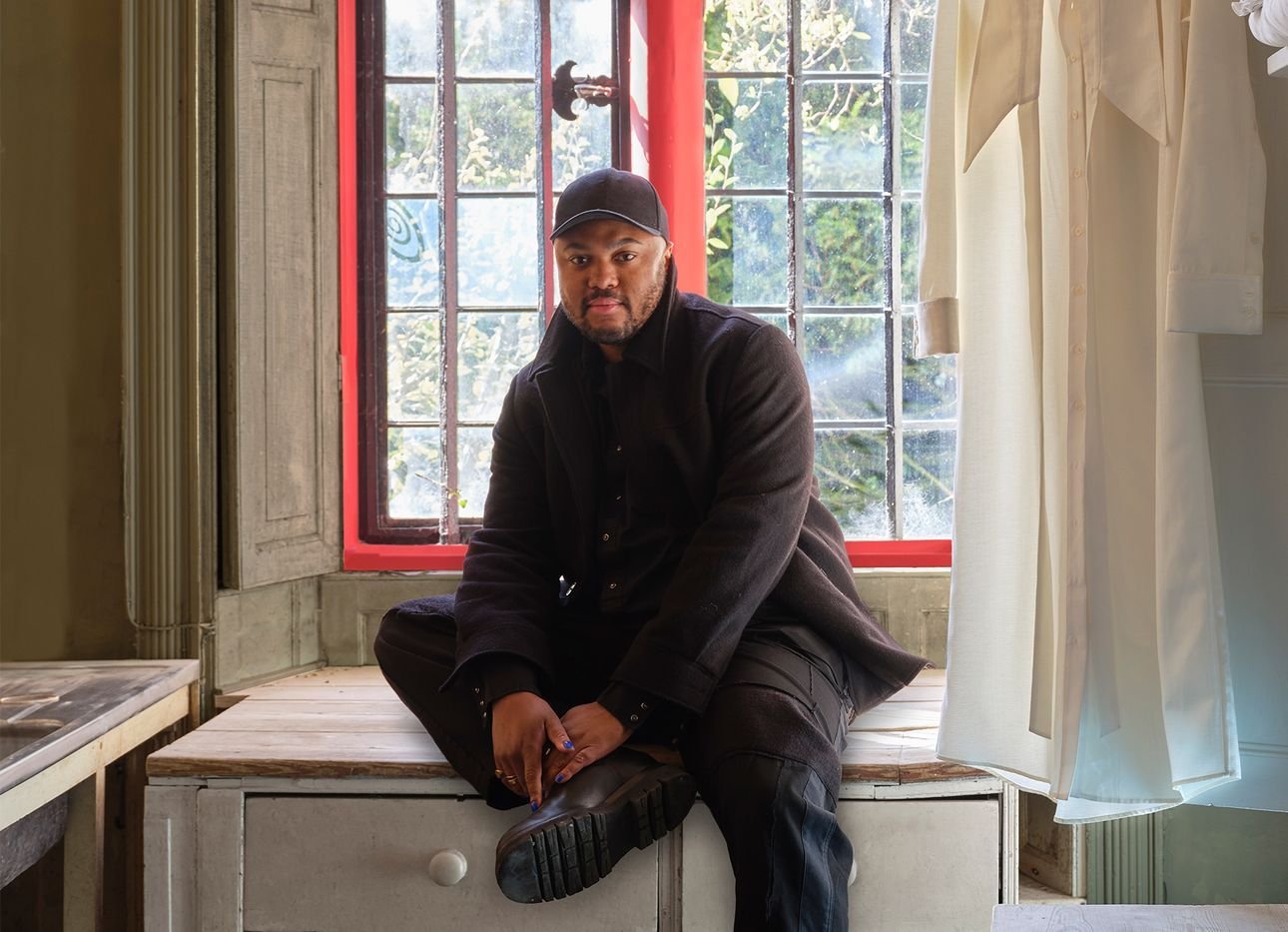Christopher John Rogers: Color from Runway to Room
Photo by Robin Kitchin
Christopher John Rogers, a Brooklyn-based fashion designer renowned for his daring use of color, bold prints, and innovative textures, has dressed icons like Beyoncé, Rihanna, and Michelle Obama. Growing up in Baton Rouge, Louisiana, Rogers discovered his passion for fashion design in an unexpected way – creating comic books with his friends in the fourth grade. As he designed outfits for his characters, his interest in fashion began to take shape. Further inspiration came through various sources, from the scanned pages of fashion magazines he accessed online to the vibrant personalities of designers like Alexander McQueen and Vivienne Westwood. His creativity flourished on platforms like DeviantArt and Tumblr, where he connected with other artists and developed his distinct style.
Rogers’ upbringing emphasized the importance of appearance. "Especially as a Black person, you couldn’t give anyone a reason to say anything,” he recalls. Influenced by his impeccably dressed grandmother, he began experimenting with color and style from a young age, subtly challenging conventional norms with bold color combinations. This early exploration of color theory became a hallmark of his later work. His journey continued at the Savannah College of Art and Design, where he developed his distinctive aesthetic despite initial resistance from some educators who misunderstood his vibrant approach.
Motivated by a passion to create designs that make people feel unique, Rogers embraced bright hues, mixed prints, and head-to-toe color looks, drawing from the visual tension he admired. Despite challenges, he remained steadfast in his vision, believing that his bold, cartoon-like creations would resonate with those who appreciated their exuberant spirit. “I feel like I’m making clothes for cartoon characters, in a way,” he confides. This commitment to authenticity and emotional expression has defined Rogers' career, leading to his current collaboration with Farrow & Ball, where he continues to push the boundaries of color and creativity.
"Color as object is really important to me," Rogers states. A designer of more than fashions, Rogers is an artist whose medium transcends fabric and thread, leading him to take the bold step of venturing into the world of home decor. Partnering with British legacy paint brand, Farrow & Ball, the now Brooklyn-based fashion designer is set to redefine the use of color in our homes, combining drama and practicality through the idea of "pragmatic glamour."
"If there’s anything I care more deeply about than clothes, it has to be color," Rogers reflects – a passion he’s channeled into his new collection, aptly named Carte Blanche. A combination of paints and wallpaper, the collection features 12 shades and three prints that promise to bring his signature vibrancy and elegance to interiors.
Carte Blanche is a showcase of Rogers’ curiosities, obsessions, and keen observations of color, gleaned from years of dressing some of the world’s most glamorous figures. The 12 shades range from a vibrant green called Raw Tomatillo, inspired by his grandmother’s fried green tomatoes, to a rich brown named, Cardamom, a silver blue dubbed Sardine, and a muted pink he calls, Shallot. Each hue tells a story, deeply personal and whimsically unique. “I love when color names are unexpected but also reflect exactly what that shade is,” Rogers explains. “This blue is totally sardine as a color for me, the pink is perfect, and ‘Hog Plum’ is this weird, future yellow. I love that they have a sense of humor, too.”
The accompanying wallpapers are equally enchanting. Dot, with its playful gradient and vivid textures, Stripe, offering a bold twist on a classic pattern, and Check, featuring a clean and vibrant geometric design, all use the Carte Blanche paint colors. These patterns add depth and dimension, transforming any space into a canvas of color and creativity.
With this collection, Rogers is breaking new ground in more than just his own career. He is one of the few Black designers worldwide to helm a paint line, proudly following brands such as AphroChic and Clare. His collaboration with Farrow & Ball marks only the second guest designer in the brand’s seventy-seven-year history, following the renowned Kelly Wearstler.
Photo by James Merrell
For Rogers, this collaboration is about more than simple aesthetics; it’s a celebration of his roots and inspirations. Reflecting his Louisiana childhood, his designs are filled with the whimsy and vibrancy of his youth, with a unique emphasis on emotional creativity and self-expression. The inspiration he draws from Baton Rouge is evident everywhere in this collection, from its French title, to the names of colors, to the colors themselves (Sardines were his grandfather's favorite snack).
Photo by James Merrell
“Color has always been about expressing myself,” he says. “It’s a starting point for me, but it’s not an ending. I look at things in a particular way. For me, Sesame Street is just as sophisticated as an amazing 1960s architect. I bring that lack of hierarchy to everything I do, whether it’s working on a collection of clothes or colors.”
The colors from the Carte Blanche collection come alive in Rogers' Brooklyn studio. The colors are vivid, modern, and contemporary, bringing an exciting addition to Farrow & Ball’s already wide range of hues. The hues it boasts, from vibrant pink to silvery-blue, are not for the faint-of-heart, but are sure to transform any space with their vibrant presence.
Christopher John Rogers is on a journey to redefine how we interact with color, both in fashion and in our homes. This collaboration with Farrow & Ball is a testament to his vision and artistry, proving that the world of color is truly limitless.


















